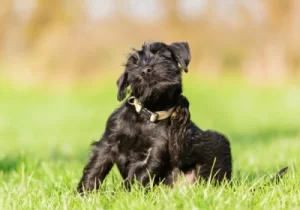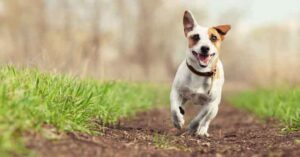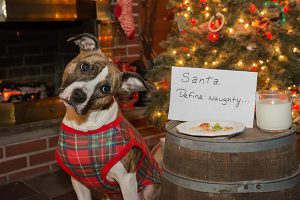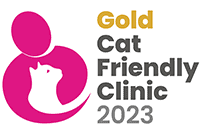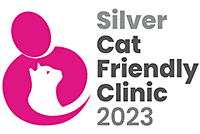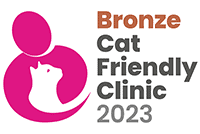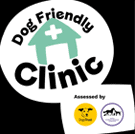To make sure you have a wonderful Christmas and New Year with your pet, we’ve drawn up a list of things to watch for over the festive period. If your pet appears unwell in any way, give your local practice a call.
1. Christmas decorations
Christmas decorations can prove irresistible to inquisitive pets. Shiny tinsel and sparkly ribbons can attract those cats, while baubles and other hanging decorations become appealing to dogs who like a good chew. These can all can cause problems if ingested. Close supervision of animals in decorated rooms, and ideally never leaving pets unattended around the Christmas tree will make sure it remains vertical and in one piece for the rest of the season!
2. String
String can be a serious hazard to pets if they swallow it and it gets trapped inside their intestines. It could even require surgery to remove. Cats love to play with string and dogs really like the meaty flavoured string from your turkey. Please ensure you dispose of all string immediately and make sure any hanging from the wall with cards on, is well out of the way of playful paws.
3. Poisonous Plants
There are lots of potentially hazardous plants around over the Christmas period that wouldn’t usually be in your house. Amaryllis, Poinsettias, Holly berries, Mistletoe and Yew are all irritants and potentially toxic to your pets if digested. Some are more toxic than others and the most common signs seen include drooling, mouth sores, vomiting and diarrhoea. Even drinking the water from the base of your Christmas tree can cause these signs, especially if preservatives and fertilisers are used. Place a plastic cover over the base of the tree and move plants to areas where your pet is less inclined to have a nibble.
4. Christmas Lights
Be extra careful with Christmas lights as teething puppies and cats that like to play with string are at risk of chewing wires and cables. The obvious concerns are that chewing through these wires can cause burns to the mouth, or even an electric shock that could require hospitalisation. They are also at risk of cracking the bulbs in their mouths and other string/decoration-related injuries.
5. Alcohol
It might be funny watching your dog drinking Grandad’s beer whilst he isn’t looking, but there could be consequences. Alcohol consumption in pets can result in heart arrhythmias, tremors and seizures. Keep your half empty tins or glasses out of reach, as some pets love the taste. Don’t forget that cats can be attracted to drinks that have milk or cream-based ingredients.
6. Chocolate
Chocolate is probably the most well-known toxic food to our pets, as it contains theobromine (similar to caffeine) which can cause increased heart rates, vomiting, diarrhoea seizures and in extreme cases, your pet may die as a result. The amount of theobromine in chocolate depends on the type of chocolate consumed. The darker the chocolate, the more theobromine present. If you are unsure about how much your pet has eaten, call us.
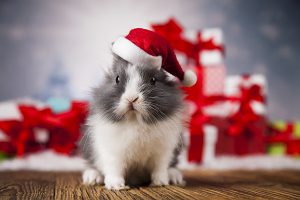 7. Sweets and Liquorice
7. Sweets and Liquorice
It’s not just chocolate that can cause problems to our pets if consumed. Some sweets contain artificial sweeteners, such as xylitol, which can cause blood glucose to drop, resulting in the animal collapsing. Also, most sweets can cause a laxative effect, particularly in dogs. You could have an unexpected and unwanted surprise in the kitchen, as a result…
8. Grapes and Raisins
Exactly why these foods are poisonous is unknown, but ingesting them can induce kidney failure in both dogs and cats. The amount required to produce such an effect differs in each individual, but it can be as little as a small handful of raisins. Keep grapes well away and steer clear of giving your pets anything which contains these fruits, such as in Christmas pudding or Christmas cake.
9. Nuts
Nuts are bad for dogs. They may suffer from a variety of symptoms, including weakness, overheating and vomiting. Similar to chocolate, you should seek Veterinary advice and if caught early, the prognosis for recovery tends to be very good.
10. Festive Parties
If New Years Eve fireworks are on the agenda, or you’re having a party with lots of people, popping champagne bottles and music that may make your pet nervous, we have a range of products to help your pet cope with the stress, ranging from over the counter calming products or when necessary we can prescribe medicines and offer behavioural advice.
11. Toy Parts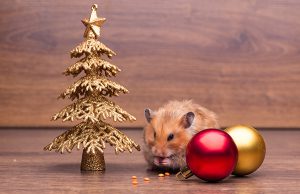
Parts from small children’s toys can be very dangerous to pets. Dogs, in particular, have a habit of picking up small toys and chewing on things they shouldn’t. Some smaller toy pieces may pass through the intestines if small enough and round, but they can be deadly if they are larger or oddly shaped, as they can cause intestinal blockages. Parts that have sharp edges which can cause gut perforations. If you think your pet has swallowed something, call us.
12. Festive Food
Pleading eyes are difficult to resist and it’s very tempting to sneak your dog a roast spud under the table or let your cat have the brandy cream from the Christmas pudding, but we strongly advise you don’t. If a dog or cat has a well balanced pet food for 364 days a year, “Christmas Dinner” can sometimes be a shock to the system. We see many pets with an upset stomach because “he enjoyed his turkey and stuffing” and cooked bones are a definite no-no. They can splinter and get stuck in the throat. There are plenty of treats specifically designed for cats and dogs and these are a much better alternative and make a lovely stocking filler to go with any toys that Santa may bring them.



